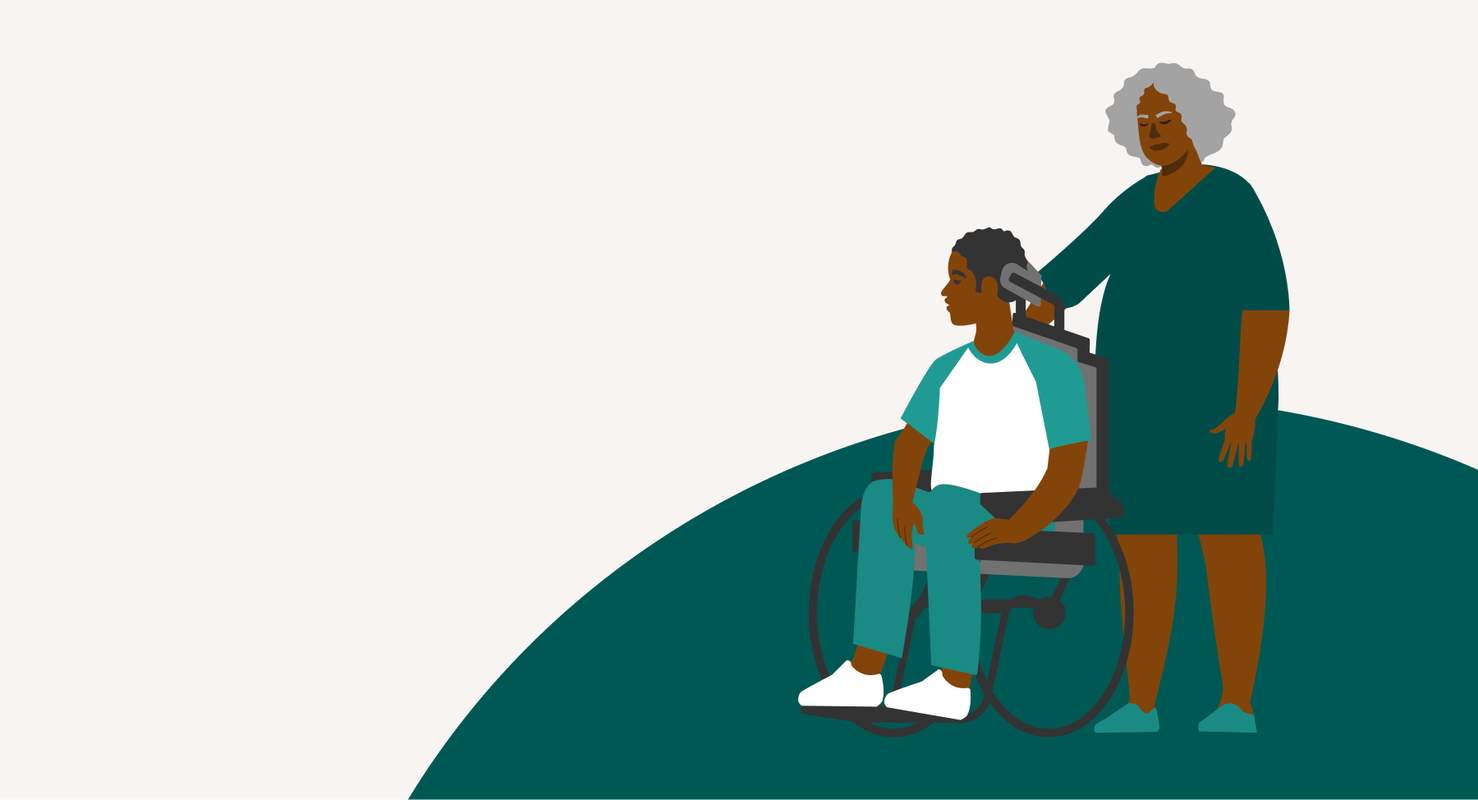The Hidden Impact of Federal Budget Cuts: What Families and States Stand to Lose
Blog Post

Halfpoint Images via Getty Images
July 1, 2025
Recent efforts to curb federal spending have generated a lot of news. But few Americans are aware of the massive cuts nestled within Congress’s big reconciliation bill and the ripple effects they will have on families. Many programs that have been funded by the federal government with bi-partisan support for decades will be eliminated, intensely reshaped through new requirements, or pass increased costs to states, who are unlikely to be able to cover the full costs without substantially raising taxes.
Here are a few examples of how some of the historic cuts and implementation changes being considered at the federal level could have very real consequences for families across the country.

This toddler has complex medical needs requiring weekly appointments, and Medicaid cuts threaten his care. They miss appointments as Mom’s not covered by unpaid leave via the Family and Medical Leave Act since her company has under 50 employees. Only 27% of U.S. workers have paid family leave via their jobs and less than 60% have unpaid leave through the Family and Medical Leave Act.
Mom and Dad are struggling to cover child care costs, which can make it hard to save for their children’s futures. A “Trump Account” for their baby with $1,000 at birth helps provide a foundation of savings but they can’t now—and may never be able to—add much to the account. Like most U.S. families, both parents must work to stay afloat. 74% of moms and 93% of dads work outside the home. Child care costs families 8-19% of their income. Like families in 46 states, it costs more than their mortgage. Saving for the future is difficult, if not impossible.
Major cuts to SNAP and Medicaid in their state make it difficult to afford both food and health care for their family. Forty-two million Americans depend on SNAP to help with food costs, and children make up nearly 40% of all SNAP participants. An expanded Child and Dependent Care Tax Credit helps cover a portion of their child care.
When a tornado damaged the house, there was no funding for individual assistance to help with repairs. Due to federal FEMA cuts help was sparse and disorganized and they don’t know if they will be able to cover the cost of fixing their home.
Related resources from New America:
- To Have and Have Not Story Series: What it means to live in a country that does not guarantee paid family and medical leave
- How the House Passed Reconciliation Bill Would Impact Young Children and Their Families
- Designed for Filing, Not for Families: Reimagining Tax Credit Delivery
- What Does a Federal Transition Mean for Local Early Childhood Initiatives?
- Getting Rid of FEMA Will Bankrupt Small Towns

These moms help Grandpa manage his chronic illness and Grandpa cares for his granddaughter while the moms work. Federal cuts mean their local hospital is struggling to stay open. Without regular medical care he would be too ill to care for their daughter, which would force one Mom to reduce work hours and income.
Without Grandpa’s child care help, these moms won’t be able to afford both child care and rent. Children under 5 are the group most likely to face eviction due in part to unaffordable child care—the average national cost is $13,128 and exceeds median annual rent payments. Around 134,000 families are pushed into poverty each year due to prohibitive childcare costs.
One mom is working full-time while in community college at 6 credits per semester. Under new federal rules, half-time enrollment is defined as 7.5 credits and Pell Grants are only for at least half-time students. She has to decide: reduce work hours to increase credits and maintain Pell Grant eligibility, or lose eligibility and take on more student loans?
One mom has an hourly job with an unpredictable schedule, like many service workers. Her income can swing as much as 30% every month, while the bills don’t. She’d like to get training to find a better job, but her schedule makes it impossible.
Related resources from New America:
- The True Victims of the US Evictions Crisis
- How the House Reconciliation Bill Harms the Average Family
- The President's Proposed Budget Would Strip Child Care Access from Student Parents
- Why Today’s Shopping Sucks: the rise of on-demand scheduling has made the shopping experience - and workers lives - miserable
- Schedule Chaos: why a predictable schedule is better for both workers and business
- More Alike Than Different: Findings from CivicSpace’s 2024 Financial Security Survey

Mom earns less than Dad and her brother so she leaves her job to care for her chronically ill parents, kids, and nephew. People forced out of the workforce for caregiving lose $295,000 over their lifetimes, straining family economic stability. Care duties and costs are the largest reasons parents are forced to leave jobs.
Mom left her teaching job to care for her parents and kids, so her school had to hire someone with no training or experience. The federal government cut funding for the Educator Registered Apprenticeship intermediary, which had been on track to recruit 1,000 teacher apprentices through partners across the country. The students’ academic performance has since declined.
Car repairs made Mom and Dad 7 days late paying rent. The management company filed an eviction with the county court on day 6. They couldn’t attend the hearing due to work and caretaking and had no legal assistance due to federal legal aid services cuts. The court ruled in the landlord’s favor so the family was evicted and had to split up to move in with different relatives.
This preschooler receives education and speech therapy through Head Start and a community center. His educational future is uncertain—the regional Head Start office was cut and Title I funding is flat. More than 740,000 children rely on Head Start and nearly 46 million students attend districts that received Title I funding.
Related resources from New America:
- The true victims of the US eviction crisis
- Mapping Eviction Judgments for the First Time
- How the House-Passed Reconciliation Bill Would Negatively Impact Young Children and Their Families
- Federal Cuts Threaten Babies and Preschoolers with Disabilities from All Angles
- Project 2025 Would End Headstart and Hurt Children with Disabilities

This mom is a child care worker and earns wages low enough to qualify for public benefits. The child care center owner operates on razor-thin margins, like many child care providers, making it impossible to pay staff higher wages. If federal preschool grants are cut, her state may have to reduce its support of their program and she could lose her job.
Caring for her son has become increasingly difficult as this Mom has aged. Medicaid has helped, but federal cuts mean her state has reduced non-essential services to keep state budgets from soaring. With cuts to home- and community-based services through Medicaid, her son could end up institutionalized or hospitalized.
Like many child care workers, Mom does not have health insurance through her employer and has depended on Medicaid for her own health care needs. She’s already struggling to pay for housing, food, and medication. 1 in 5 adults rely on Medicaid.
Cuts to the federal housing voucher program means this family is no longer eligible for the Section 8 voucher that had helped them pay rent, so they can’t afford most housing. They’re rejected from apartments they can afford because of a past eviction when Mom was out of work. They move in with a relative whose home is not wheelchair accessible.
Related resources from New America:
- Why is childcare so expensive? And what can we do about it
- The Impact and Aftermath of Pandemic Aid for Financially Struggling Families: from unprecedented investments to “you’re on your own.”
- Trump’s Big Beautiful Bill is built on falsehoods about low-income families
- The Rooftop: Innovative Ideas to Solve the Housing Crisis
- Tools and Resources for Eviction Data Access and Analysis